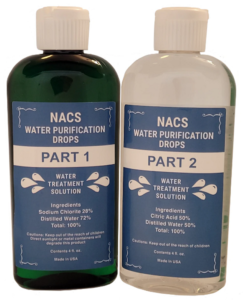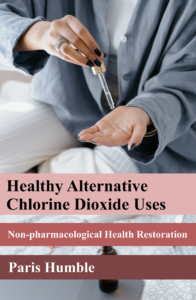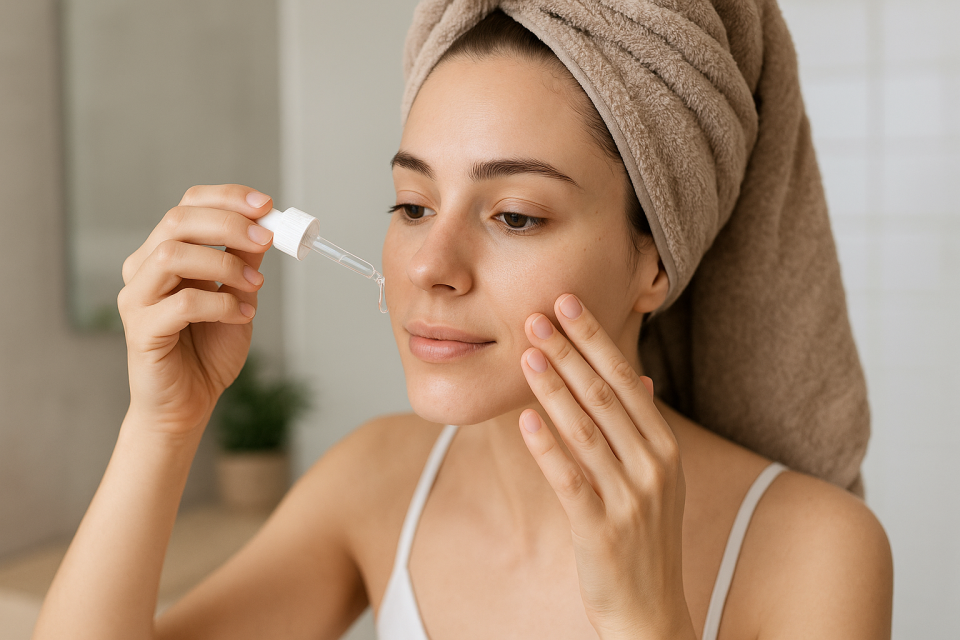Chlorine dioxide is best known as a powerful and inexpensive water purifier. Campers, hikers, survivalists, and military personnel have carried chlorine dioxide drops for decades to make unsafe water safe to drink. That is its only approved use. However, millions of people worldwide are now reporting their own off-label use of these “water purification drops” for persistent skin conditions that do not always respond well to conventional medicine. Because chlorine dioxide is a broad-spectrum oxidizer that kills bacteria, fungi, and viruses by breaking down their cell walls, it is being applied topically in diluted forms to address various skin-related issues.
While chlorine dioxide (CD) is not officially approved for medical use, its effectiveness, low cost, and non-patentable nature have made it a popular home remedy. Below are the Top 10 skin problems for which it is currently being used.
Top 10 Skin Problems
- Acne
Clogged pores, excessive oil production, and bacterial overgrowth are the primary causes of acne. It often affects the face, chest, and back. Chlorine dioxide’s oxidizing action kills acne-causing bacteria (Cutibacterium acnes) and clears surface oils, reducing redness and breakouts.
A weak topical CD solution (significantly diluted drops) can be dabbed on breakouts with a cotton ball or added to a facial rinse once or twice daily.
- Psoriasis
Psoriasis is an autoimmune condition that accelerates skin cell turnover, leading to red, scaly patches that itch or crack. Chlorine dioxide’s antimicrobial and cleansing action may help reduce surface irritation, calm secondary infections, and keep plaques cleaner.
A diluted CD spray or compress can be applied to the affected areas, followed by natural moisturizers such as aloe vera or coconut oil.
- Warts
Warts are caused by human papillomavirus (HPV) and can be stubborn to treat. The oxidizing effect damages viral particles and slowly breaks down wart tissue.
Direct dabbing of the CD with a concentrated topical solution (carefully applied only on the wart) once or twice daily, avoiding surrounding skin.
- Dandruff
Dandruff is the flaking of the scalp, often caused by yeast (Malassezia), dryness, or irritation. Chlorine dioxide’s antifungal properties help reduce yeast on the scalp, while cleansing excess oil and buildup.
A few diluted drops of CD are added to shampoo or used in a scalp rinse once or twice a week.
- MRSA (Methicillin-Resistant Staphylococcus aureus)
MRSA is a drug-resistant bacterial skin infection that can cause painful boils, abscesses, and sores. Chlorine dioxide penetrates and oxidizes bacterial cell walls, killing resistant strains without harming surrounding tissue.
A diluted CD solution is applied directly to the lesions with sterile gauze, refreshed several times daily until healing is observed.
- Burns
Burns damage the skin’s layers and are prone to infection during the healing process. Chlorine dioxide disinfects the wound surface, reduces microbial load, and helps prevent infection while tissue regenerates.
A lightly diluted CD solution is sprayed or rinsed gently over the burn, followed by a sterile covering. Must be reapplied with care.
- Baldness (Alopecia)
Hair loss can result from genetics, scalp infections, or autoimmune conditions. By reducing fungal or bacterial scalp imbalances, users report improved follicle health and hair regrowth.
A weak CD scalp rinse or spray is massaged into thinning areas several times a week.
- Eczema
Eczema (also known as atopic dermatitis) is characterized by itchy, inflamed, and cracked skin. By keeping skin surfaces disinfected, chlorine dioxide reduces microbial triggers that worsen flare-ups.
Diluted CD spray or compress applied gently, followed by natural moisturizers to restore the skin barrier.
- Scabies
Scabies is caused by microscopic mites burrowing under the skin, resulting in severe itching and a rash. Chlorine dioxide’s oxidizing action helps kill mites and sterilize affected skin, thereby reducing the risk of reinfection.
A diluted CD wash or soak is applied over the whole body, especially to affected zones, and repeated daily until symptoms improve.
- Athlete’s Foot
Athlete’s foot is a fungal infection causing itching, peeling, and redness between the toes or on the soles. Chlorine dioxide’s antifungal properties eliminate the fungus and sterilize shoes or socks when rinsed with the solution.
A diluted CD foot soak for 10–15 minutes daily, plus light spraying of shoes or socks to prevent recurrence.

Top 10 Skin Problems Where Chlorine Dioxide Is Being Used
| Skin Problem | Description | How Chlorine Dioxide Works | Application Method |
| 1. Acne | Clogged pores and bacterial overgrowth cause breakouts. | Kills acne-causing bacteria and clears surface oils. | Dab diluted drops on breakouts or use as a facial rinse. |
| 2. Psoriasis | An autoimmune condition characterized by red, scaly, and itchy plaques. | Cleanses plaques, reduces irritation, and helps prevent infection. | Apply diluted spray or compress, followed by moisturizer. |
| 3. Warts | Caused by human papillomavirus (HPV); often persistent. | Oxidizes viral particles and breaks down wart tissue. | Dab a more concentrated solution directly on the wart, avoiding healthy skin. |
| 4. Dandruff | Flaking scalp caused by yeast, dryness, or irritation. | Reduces fungal overgrowth and cleans excess oils. | Add a few drops to your shampoo or use as a weekly scalp rinse. |
| 5. MRSA | Drug-resistant bacterial skin infection (painful boils/sores). | Penetrates and oxidizes resistant bacteria. | Apply the diluted solution with a gauze several times daily. |
| 6. Burns | Skin damage prone to infection during healing. | Disinfects the burn surface and reduces the microbial load. | Spray/rinse gently with diluted solution, then cover with sterile dressing. |
| 7. Baldness (Alopecia) | Hair loss due to genetics, infection, or autoimmunity. | Reduces scalp microbes, supporting healthier follicles. | Massage a weak scalp rinse or spray into thinning areas several times weekly. |
| 8. Eczema | Chronic itchy, inflamed, and cracked skin. | Reduces microbial triggers and disinfects the skin surface. | Apply diluted spray or compress, then moisturize. |
| 9. Scabies | Caused by mites burrowing into the skin, leading to rash and itching. | Helps kill mites and sterilize affected skin. | Use diluted wash or soak over body, repeat daily until symptoms improve. |
| 10. Athlete’s Foot | Fungal infections of the feet can cause itching, peeling, and redness. | Eliminates fungus and sterilizes footwear. | Use diluted foot soak 10–15 mins daily; spray shoes/socks. |
Why Isn’t Chlorine Dioxide Widely Available for Skin Treatments?
Many users believe the reason chlorine dioxide is not in mainstream skin-care products is simple: it’s too cheap and cannot be patented. Pharmaceutical and cosmetic companies generate significantly more profit by selling expensive creams, pills, or prescription treatments.
Meanwhile, chlorine dioxide remains available only as a water purifier. Anyone who explores other applications is pursuing this knowledge on their own.
Chlorine dioxide is not a cure-all, and it must always be used carefully and in proper dilution. But reports from millions of users suggest it is a remarkably effective and affordable home remedy for a wide variety of stubborn skin problems.
Those who use it often see it as a missing link in natural skin care, offering relief where costly products have failed.

Quick Use Guide: Chlorine Dioxide for Skin Problems
How to Apply (Always Use Proper Dilution)
- Acne: Dab diluted solution directly on pimples or use as a facial rinse.
- Psoriasis: Spray or apply with compress; moisturize afterward.
- Warts: Dab stronger solution only on wart (avoid healthy skin).
- Dandruff: Add drops to shampoo or use as scalp rinse weekly.
- MRSA: Apply diluted solution with gauze several times a day.
- Burns: Gently spray or rinse with diluted solution, cover with sterile dressing.
- Baldness (Alopecia): Massage weak solution into scalp several times a week.
- Eczema: Apply spray or compress, then follow with natural moisturizer.
- Scabies: Use diluted body wash or soak daily until symptoms improve.
- Athlete’s Foot: Soak feet 10–15 minutes daily; spray shoes and socks.

Leave a Reply